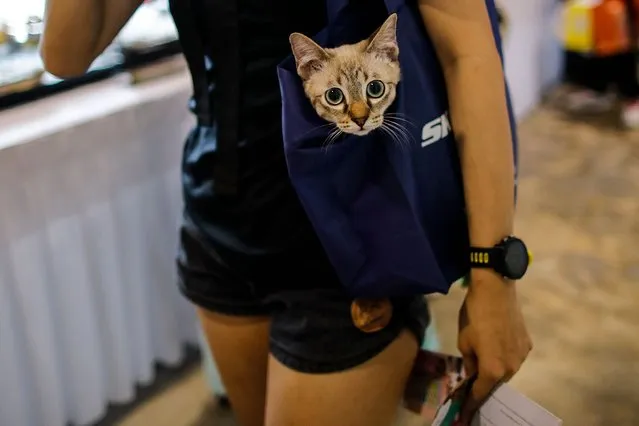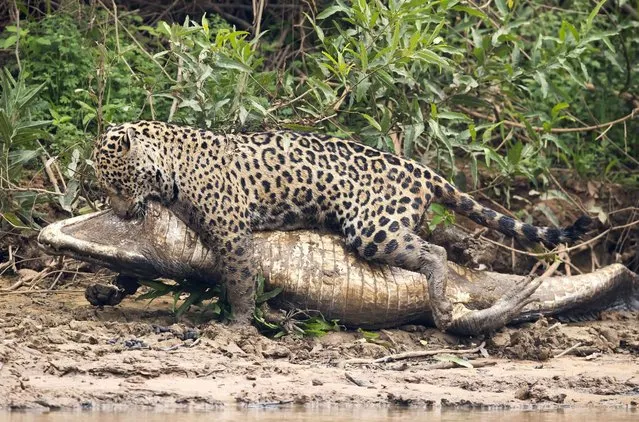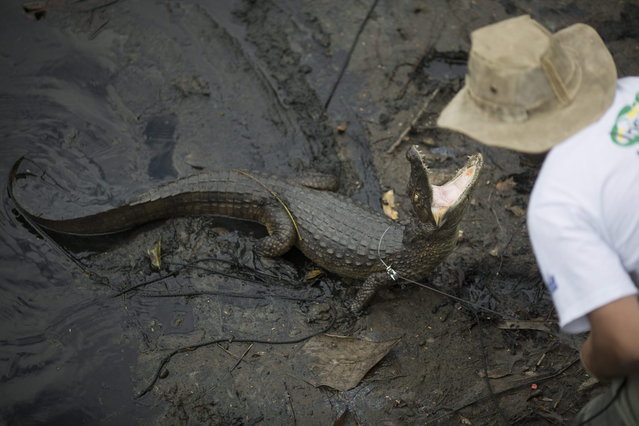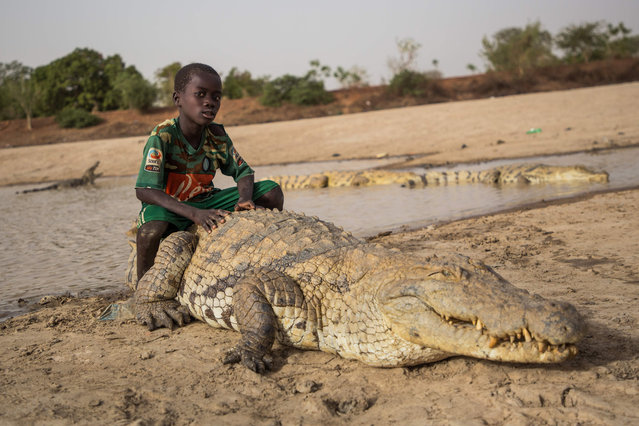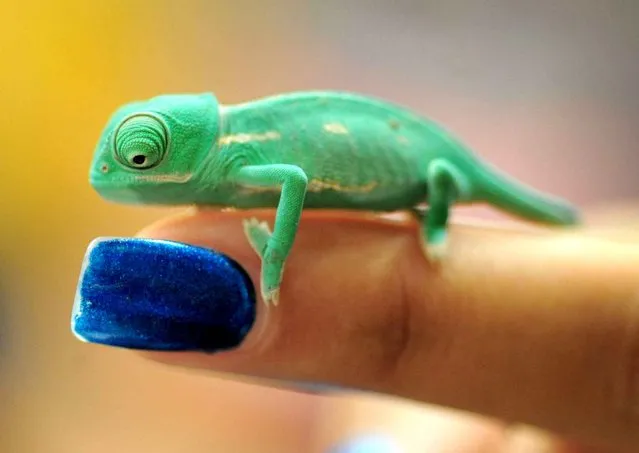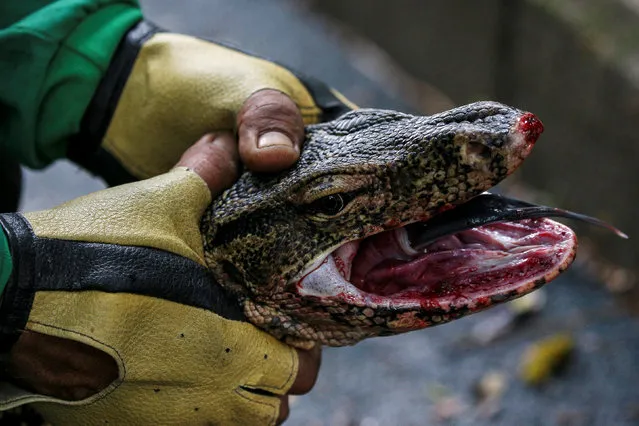
A park worker holds a monitor lizard at Lumpini park in Bangkok, Thailand, September 20, 2016. More than 400 of the Monitor lizards in the park will be caught by Thai authorities to relocate the reptile to a wildlife breeding center in the effort to control the creature population in the public park after the monitor lizard disturbing and causing several minor accident of people who jogging and cycling at the Lumpini Park. (Photo by Athit Perawongmetha/Reuters)
21 Sep 2016 09:49:00,post received
0 comments


